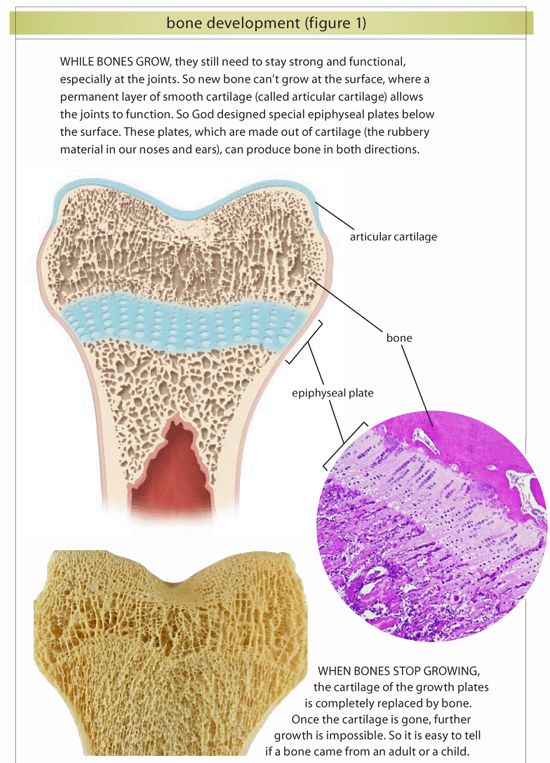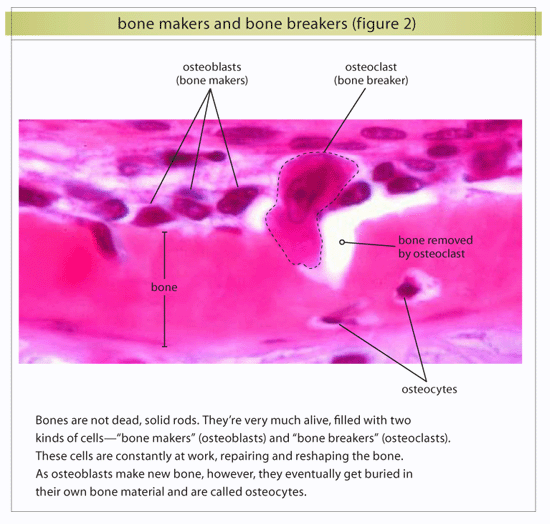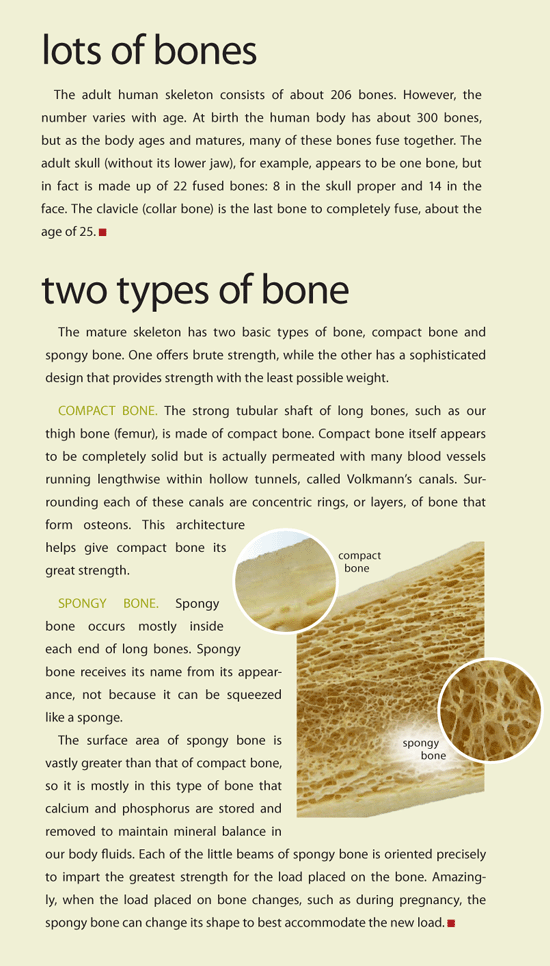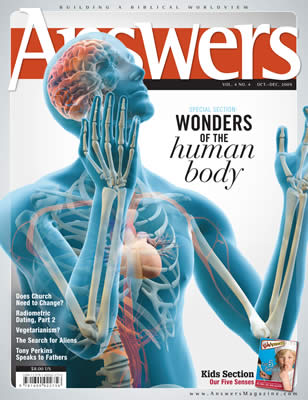Bones
God's Living Girders
No bridge was ever built with girders like this! The bones in our bodies aren’t just strong and flexible, they’re constantly building and repairing themselves.
“As you do not know what is the way of the wind, or how the bones grow in the womb of her who is with child, so you do not know the works of God who makes everything” (Ecclesiastes 11:5).
Bones may not look very lively, but our life depends on a boney skeleton that is an engineering marvel. Bones are often associated with death, like the dry bones of Ezekiel 37:1–14, but our bones are very much alive with cells, blood vessels, nerves, and pain receptors. Indeed, bones are capable of growing, repairing, and even changing their shape to meet the demands we place on them.
A Bone’s Function
Bones serve three kinds of critically important functions in our body—mechanical functions, maintenance of mineral levels, and blood production.
Mechanical functions—protection, support, and movement
First, bones have several mechanical functions. For example, they protect the body’s vital organs; they serve as a framework to which the muscles and organs are attached; and they allow the body to move by means of muscles contracting across joints.
Maintenance of mineral levels
A second important function for bone is to help maintain precise levels of calcium and phosphorus in our blood and tissue fluids (a process called mineral homeostasis). Bone serves as a depot for storing and removing these minerals as needed. Among other things, calcium is vital for cells to stick together and for muscles to contract, while phosphorus is an essential ingredient in many complex chemicals, such as DNA and RNA.
Blood production in bone marrow
Finally, an exceedingly important function of bone is to produce blood in bone marrow. The marrow produces both red and white blood cells. Red blood cells are essential for carrying oxygen to all the cells of our body, while white blood cells fight disease and infections.
Special cells in the marrow, called megakaryocytes, produce something else for blood, called platelets. These cell fragments circulate in the blood and are important for blood clotting that patches holes in blood vessels.
A Bone’s Strength
The long bones of our body, such as in our limbs, need special designs for strength.
Rather than solid rods, which bend easily, our longer bones are essentially tubes. Engineers have found that, pound for pound, tubes are stronger and resist bending better than solid rods.
Bone itself is a remarkably strong material. It is as strong as cast iron and resists bending as well as steel, though bone is only one-third of steel’s weight.
Much of the strength of bone stems from the fact that bone is what engineers refer to as a composite material. Composite materials are made up of two components, a matrix and reinforcement, that work together to produce enhanced strength. An ancient example is brick made of clay and straw. Modern examples include reinforced concrete and fiberglass.
Bone has the right mix of two very different components: a very hard inorganic material called hydroxylapatite and a tough, fibrous organic material called collagen (the protein of leather). The crystal material makes up about 70% of the dry weight of bone, while collagen makes up most of the remaining 30%.
If bones were made up entirely of hydroxylapatite, they would shatter under a load. If they were made entirely of collagen, they would be rubbery. Instead, they have a perfect balance of both.
Bone’s Development
Cartilage in the womb
Most bones in our body began as cartilage while we were still in the womb. (Cartilage is a rubbery-like material that gives the flexibility to our nose and ears.) The advantage of cartilage over bone in the early stages of growth is that cartilage can grow from within (interstitial growth) as well as at its surface (appositional growth). Bone, on the other hand, can only grow by adding to its surface, much like the way we make a snowball grow to make a snowman.
During growth, cartilage is gradually replaced with bone by a process called endochondral ossification. First, calcium infiltrates the cartilage with calcium salts, forming a very brittle calcified cartilage. Then this temporary form of cartilage serves as a framework on which bone will form, much like applying plaster to chicken wire. In time, bone replaces the cartilage except at the ends, where cartilage is retained to form joints.
Growing in length
It is easy to understand how a bone can grow in thickness by adding to its surface, but it is less obvious how a bone grows in length. The ends are capped with a special articular cartilage necessary to form the joints, and the joint would be destroyed if bone were laid down over articular cartilage.
So special cartilage growth plates, called epiphyseal plates, are necessary for long bones to grow in length. These plates, located near each end, bridge the bones’ width (Figure 1). Because these growth plates are made of cartilage, they can grow from within. This permits the bone to lengthen without disturbing the cartilage on the ends. As the plates grow in thickness, bone progressively replaces the cartilage (by endochondral ossification, described above).

The growth of these plates is controlled by a growth hormone made in the pituitary gland. When we reach our full height, the growth plates are completely replaced by bone and are no longer responsive to growth hormone.
As long as the growth plates persist and growth hormone is available, an individual can theoretically get taller and taller. The tallest human in modern history was Robert Pershing Wadlow of Alton, Illinois, who at the time of his death in 1940 was 8 feet 11 inches tall! This man, known as the Alton Giant, would have been almost as tall as Goliath of Gath who measured a little over 9 feet tall (1 Samuel 17:4).
Bone Makers and Bone Breakers
Bones stop growing in length when we reach adulthood. But for the rest of our lives bones must continue to be maintained and change shape, repairing damage and responding to changing demands, such as shifting weight during pregnancy. So God designed a mechanism that allows bone to be both formed and removed where necessary (Figure 2).

The cells that make bone are called osteoblasts (which means “bone maker”), and those that remove bone are called osteoclasts (which means “bone breaker”).
“Bone makers” (osteoblasts)
Osteoblasts don’t make the crystal part of bone (hydroxylapatite) directly. They first secrete bone matrix, which initially consists entirely of organic material, including the fibrous protein collagen. Bone matrix attracts minerals, such as calcium and phosphorus, which are in our body fluids. Over time, the minerals accumulate to form the crystal hydroxylapatite.
As osteoblasts make bone matrix, many become trapped in the matrix, “buried alive” like flies stuck in amber. These buried cells are called osteocytes. To remain alive, these cells must maintain contact with one another. They do so by means of dozens of little projections (technically called “processes”) that give them a spidery-like appearance. Starting with the closest blood vessel, nutrients and gases are carried from cell to cell by means of these processes, which pass through microscopic canals called canaliculi.
“Bone breakers” (osteoclasts)
Osteoclasts are relatively large cells with many nuclei that remove both the mineral and organic components of bone. They secrete an acid that dissolves the mineral of bone, and enzymes that break down the organic components of bone, including collagen.
During the growth phase of our life, osteoblasts make bone faster than the osteoclasts remove it. When growth is completed, God designed the osteoblasts and osteoclasts to work in harmony, constantly replacing bone without growth. It is believed that this constant replacement of our skeletal tissue serves to repair micro-fractures that occur in our bones.
As we get older, osteoclasts may remove bone faster than osteoblasts make it, resulting in a reduction of bone density known as osteoporosis. For unknown reasons, osteoporosis affects women more than men. One thing we do know is that bone density increases in response to load from weight or exercise, but prolonged confinement to bed (or weightlessness, such as experienced by astronauts) can result in loss of bone density. So exercise makes good sense to potentially reduce the effects of osteoporosis without drugs.

Jesus’s Bones Were Pulled out of Joint for Our Sins
When we sin, it affects us right down to our bones. As the psalmist lamented: “Have mercy on me, O Lord, for I am weak; O Lord, heal me, for my bones are troubled” (Psalm 6:2).
The psalmist gave some remarkable prophesies about what Jesus would have to suffer on the cross to pay for our sins—a suffering that went to His very bones (Psalm 22:17). His bones would not be broken (Psalm 34:20), but—even more agonizing—all his bones would be pulled out of joint (Psalm 22:14).
Answers Magazine
October – December 2009
When it comes to God’s marvelous creation, nothing compares to the amazing design of the human body. From the protective garment of skin to the engineering of our bones and new discoveries about our brain, this issue is packed with testimony to the Master Designer.
Browse IssueRecommended Resources

Answers in Genesis is an apologetics ministry, dedicated to helping Christians defend their faith and proclaim the good news of Jesus Christ.
- Customer Service 800.778.3390
- Available Monday–Friday | 9 AM–5 PM ET
- © 2025 Answers in Genesis




